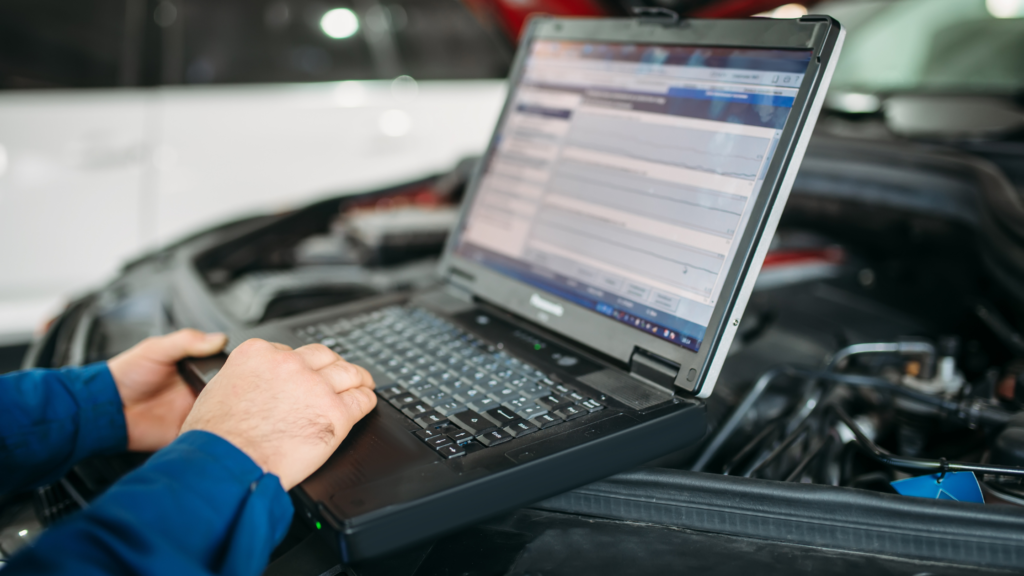Fleet auto inspections are a systematic examination of a vehicle to identify any potential problems. The inspection typically covers the exterior, interior, and mechanical components of the vehicle. The frequency of inspections depends on the type of vehicle, its age, and its usage. However, most businesses recommend conducting a bi-annual inspection. But, if your business puts a lot of miles on a fleet vehicle, it is recommended that you have a multi-point inspection every 10,000 miles. In this blog post, we will learn about the importance of fleet auto inspections.
What Is A Fleet Auto Inspection?
A fleet auto inspection is a systematic examination of a vehicle to identify any potential problems. The inspection typically covers the exterior, interior, and mechanical components of the vehicle. The frequency of inspections depends on the type of vehicle, its age, and its usage. However, most businesses recommend conducting weekly inspections of their vehicles by the driver and professional inspections every 6 months.
Purpose of Fleet Auto Inspections
Fleet auto inspections serve a number of purposes, including:
- Ensuring Safety: By identifying potential problems before they cause an accident, inspections can help to prevent serious injuries or fatalities.
- Complying With Regulations: Many government agencies have regulations that require businesses to conduct regular inspections of their vehicles. For example, the Federal Motor Carrier Safety Administration (FMCSA) requires commercial motor vehicles to undergo an annual inspection.
- Preventing Costly Repairs And Downtime: By identifying potential problems early, businesses can prevent minor issues from becoming major problems that require expensive repairs. This can save businesses a significant amount of money in repair costs and downtime.
- Boosting Operational Efficiency: By optimizing vehicle performance and fuel efficiency, inspections can help businesses save money on fuel costs and improve their bottom line.
Key Components Checked During Inspections
The key components checked during fleet auto inspections vary depending on the type of vehicle and its age. However, some of the most common components checked include:
- Exterior: This includes checking the tires, lights, windshield wipers, and body for any damage.
- Interior: This includes checking the seats, belts, mirrors, and controls for any defects.
- Mechanical: This includes checking the engine, brakes, fluids, and belts for any problems.
Ensuring Safety And Compliance
Fleet auto inspections help to ensure the safety of vehicles by identifying potential problems before they cause an accident. For example, an inspection may reveal that a tire is low on air, which could lead to a blowout. By addressing this issue before it happens, the business can prevent an accident and protect the safety of its employees and the public.
Some of the most common safety issues that can be identified through inspections include:
- Tires: Low tire pressure, worn tires, and damaged tires can all increase the risk of an accident.
- Brakes: Faulty brakes can make it difficult to stop a vehicle, which can lead to an accident.
- Lights: Faulty lights can make it difficult to see other vehicles, which can increase the risk of an accident.
- Windshield Wipers: Faulty windshield wipers can make it difficult to see in inclement weather, which can increase the risk of an accident.
- Seat Belts: Unsecured seat belts can increase the risk of injury in an accident.
Preventing Costly Repairs And Downtime
Regular inspections help to prevent costly repairs by identifying potential problems before they become major issues. For example, an inspection may reveal that a belt is starting to fray. By addressing this issue early, the business can prevent the belt from breaking, which could cause major damage to the engine compartment and must be towed back to the yard.
Downtime can be costly for businesses, as it can lead to lost productivity and revenue. Regular inspections can help to prevent downtime by identifying potential problems before they cause a vehicle to break down.
Boosting Operational Efficiency
Fleet auto inspections can contribute to efficient operations in a number of ways. First, they can help to optimize vehicle performance and fuel efficiency. By identifying and addressing potential problems, inspections can help to ensure that vehicles are running at their best. This can lead to improved fuel efficiency and lower operating costs.
Compliance with Regulations: Many regions have specific regulations and safety standards for commercial fleet vehicles. Regular inspections ensure that the fleet remains compliant with these requirements, preventing potential fines or legal issues that could arise from non-compliance.
Improved Planning and Scheduling: When fleet vehicles undergo scheduled inspections, fleet managers can better plan maintenance activities and schedule repairs during less busy periods. This strategic approach prevents disruptions during critical business operations.
Data-Driven Decision Making: Inspections generate valuable data about the health and performance of each vehicle. By maintaining comprehensive records of inspections and repairs, fleet managers can identify patterns and make data-driven decisions about vehicle replacements, maintenance schedules, and overall fleet optimization.
Enhanced Driver Satisfaction: Well-maintained fleet vehicles provide a comfortable and reliable working environment for drivers. Satisfied drivers are more likely to be productive, committed, and less prone to absenteeism.
Insurance Benefits: Some insurance providers offer benefits or discounts to businesses that conduct regular fleet vehicle inspections and demonstrate proactive maintenance practices, leading to potential cost savings on insurance premiums.
Optimizing Vehicle Performance And Fuel Efficiency
Inspections can help to optimize vehicle performance and fuel efficiency by identifying and addressing potential problems. For example, an inspection may reveal that a tire is underinflated. By inflating the tire to the correct pressure, the business can improve the vehicle’s fuel efficiency.
Other potential problems that can be identified through inspections include:
- Low Brake Fluid Levels: Low brake fluid levels can cause the brakes to work less effectively, which can lead to increased fuel consumption.
- Dirty Air Filters: Dirty air filters can restrict airflow to the engine, which can also lead to increased fuel consumption.
- Loose or Damaged Belts: Loose or damaged belts can cause the engine to work harder, which can also lead to increased fuel consumption.
Identifying Areas For Improvement And Streamlining Operations
In addition to optimizing vehicle performance and fuel efficiency, inspections can also help to identify areas for improvement and streamline operations. For example, an inspection may reveal that a particular route is taking longer than it should. By identifying this issue, the business can make changes to the route or the way that it is operated. This can help to improve efficiency and save time.
Other potential areas for improvement that can be identified through inspections include:
- Inefficient Routing: Inefficient routing can lead to wasted time and fuel.
- Poor Loading Practices: Poor loading practices can lead to increased fuel consumption and wear and tear on the vehicle.
- Ineffective Maintenance Schedules: Ineffective maintenance schedules can lead to costly repairs and downtime.
Conclusion
Fleet auto inspections are an essential part of fleet management. They help to ensure the safety of vehicles, compliance with regulations, prevent costly repairs and downtime, and boost operational efficiency. Businesses that prioritize regular inspections for their fleet will reap the benefits in terms of safety, cost savings, vehicle lifespan, and operational efficiency. If you are looking for fleet auto inspection, look no further than Fleet Force LLC.




